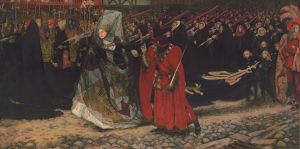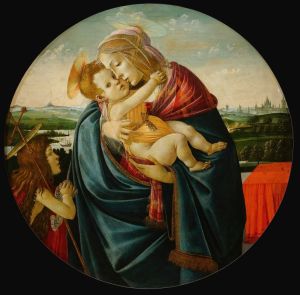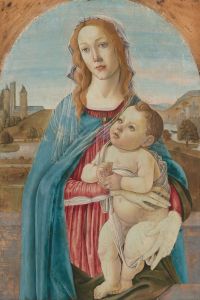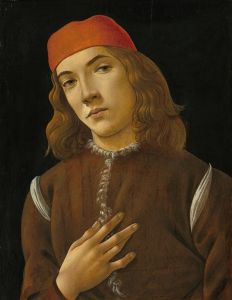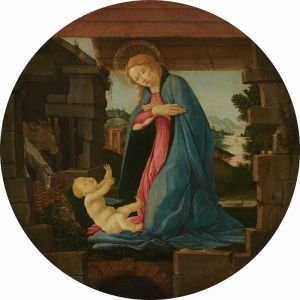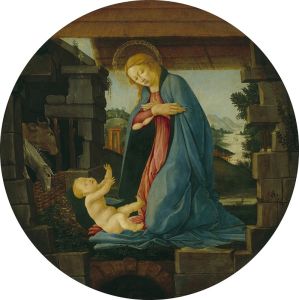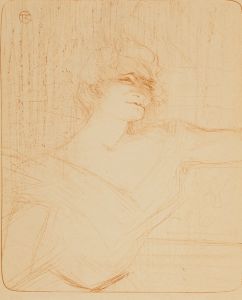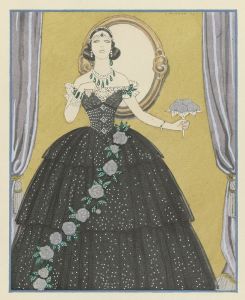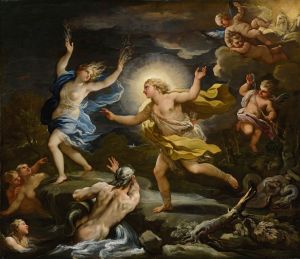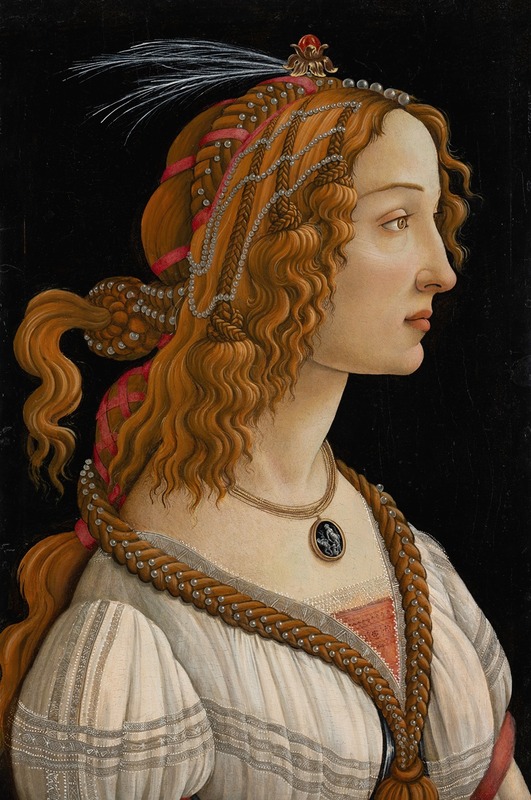
Portrait of Simonetta Vespucci as Nymph
A hand-painted replica of Sandro Botticelli’s masterpiece Portrait of Simonetta Vespucci as Nymph, meticulously crafted by professional artists to capture the true essence of the original. Each piece is created with museum-quality canvas and rare mineral pigments, carefully painted by experienced artists with delicate brushstrokes and rich, layered colors to perfectly recreate the texture of the original artwork. Unlike machine-printed reproductions, this hand-painted version brings the painting to life, infused with the artist’s emotions and skill in every stroke. Whether for personal collection or home decoration, it instantly elevates the artistic atmosphere of any space.
"Portrait of Simonetta Vespucci as Nymph" is a painting attributed to the Italian Renaissance master Sandro Botticelli. Botticelli, whose full name was Alessandro di Mariano di Vanni Filipepi, was a prominent painter of the Florentine School during the Early Renaissance. He is best known for his works "The Birth of Venus" and "Primavera," which exemplify the grace and beauty characteristic of his style.
Simonetta Vespucci, the subject of this portrait, was an Italian noblewoman renowned for her beauty. She was born Simonetta Cattaneo in Genoa around 1453 and married Marco Vespucci, a member of a prominent Florentine family, in 1469. Simonetta became a muse for many artists of the time, and her beauty was celebrated in poetry and art. She was particularly admired by the Medici family, who were significant patrons of the arts in Florence.
The painting "Portrait of Simonetta Vespucci as Nymph" is believed to have been created around the late 15th century, during a period when Botticelli was producing some of his most famous works. The portrait depicts Simonetta as a nymph, a common motif in Renaissance art that symbolizes beauty, grace, and a connection to nature. Botticelli's portrayal of Simonetta captures her delicate features and ethereal presence, emphasizing the idealized beauty that was highly valued during the Renaissance.
Botticelli's technique in this portrait reflects his mastery of line and form. The use of tempera on panel, a medium common in the Renaissance, allows for fine detail and subtle gradations of color. Botticelli's skillful use of line creates a sense of movement and fluidity, while his attention to detail in the rendering of Simonetta's features and attire highlights his ability to convey both physical beauty and a sense of inner grace.
The painting is also notable for its composition and use of symbolism. The nymph, a figure from classical mythology, is often associated with nature and the divine. By portraying Simonetta as a nymph, Botticelli not only celebrates her beauty but also elevates her to a timeless and mythical status. This reflects the Renaissance fascination with classical antiquity and the revival of its themes and ideals.
While the exact circumstances of the painting's commission and its original location are not well-documented, it is clear that Simonetta Vespucci's beauty and her association with the Medici circle made her a compelling subject for Botticelli and other artists of the time. Her untimely death in 1476 at the age of 22 only added to her mystique and the enduring fascination with her image.
Today, "Portrait of Simonetta Vespucci as Nymph" is appreciated not only for its artistic merit but also for its historical significance. It offers insight into the cultural and artistic milieu of Renaissance Florence, a time when art was deeply intertwined with the social and political fabric of the city. The painting remains a testament to Botticelli's skill as an artist and his ability to capture the essence of his subjects, making it a valuable piece of art history.





